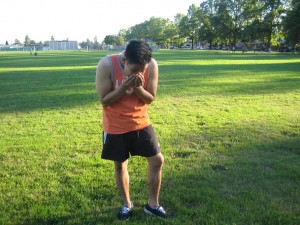Hay fever or allergic rhinitis is considered as a condition that is triggered by an allergy to certain types of allergens present in the air such as pollen, dust or pet dander. There are millions of individuals all over the world who are affected by hay fever. The signs and symptoms typically develop during the spring and fall season but can also occur at any time of the year. When it comes to allergies, it is important the appropriate measures to carry out to relieve the symptoms. The solution is to enroll in a first aid course in Saskatoon today.
Oral itchiness
If an individual has hay fever, the airborne allergens present in the surroundings can cause the irritation of the tissues that lines the mouth and throat. Take note that the irritation can trigger the development of certain sensations of itchiness on the roof of the mouth or within the throat. The oral itchiness due to hay fever can cause discomfort and can even temporarily disrupt with the sense of taste of the individual
Nasal congestion and irritation
It is important to note that the nasal passageways can end up irritated or inflamed once exposed to the airborne allergens. Once this occurs, the individual will notice that his/her nose becomes itchy or red. The irritation inside the nose can trigger the immune system to produce mucus within the nasal passageways, thus making it difficult for the airborne allergen to access the lungs.

The excess production of mucus in the nasal passageways can lead to a stuffy or runny nose, making it difficult for the individual to breathe via the nostrils. The individual can also suffer from frequent sneezing episodes and has the urge to blow the nose often to eliminate excess mucus from the nasal passageways.
Irritation of the eye
Once the airborne allergens gets in contact with the eyes, the individual can experience irritation of the eyes which is another distinctive indication of hay fever. The eyes can become watery and appear red in color or bloodshot. In most cases, dark, inflamed circles beneath the eyes can occur due to exposure to the allergen. This is a symptom that is called as allergic shiners.
Coughing
If the airborne allergen enters the airway passages, it can lead to the inflammation of the delicate tissues that lines the respiratory tract. Take note that the irritation inside the throat can trigger coughing. Constant coughing can result to additional symptoms including mild chest pain and a sore throat.
Headaches
The nasal congestion triggered by hay fever can contribute to the accumulation of pressure inside the sinus passageways. Once this occurs, the individual can experience facial pain or headaches. The headaches can either be mild or severe which usually develop in the front part of the head.
